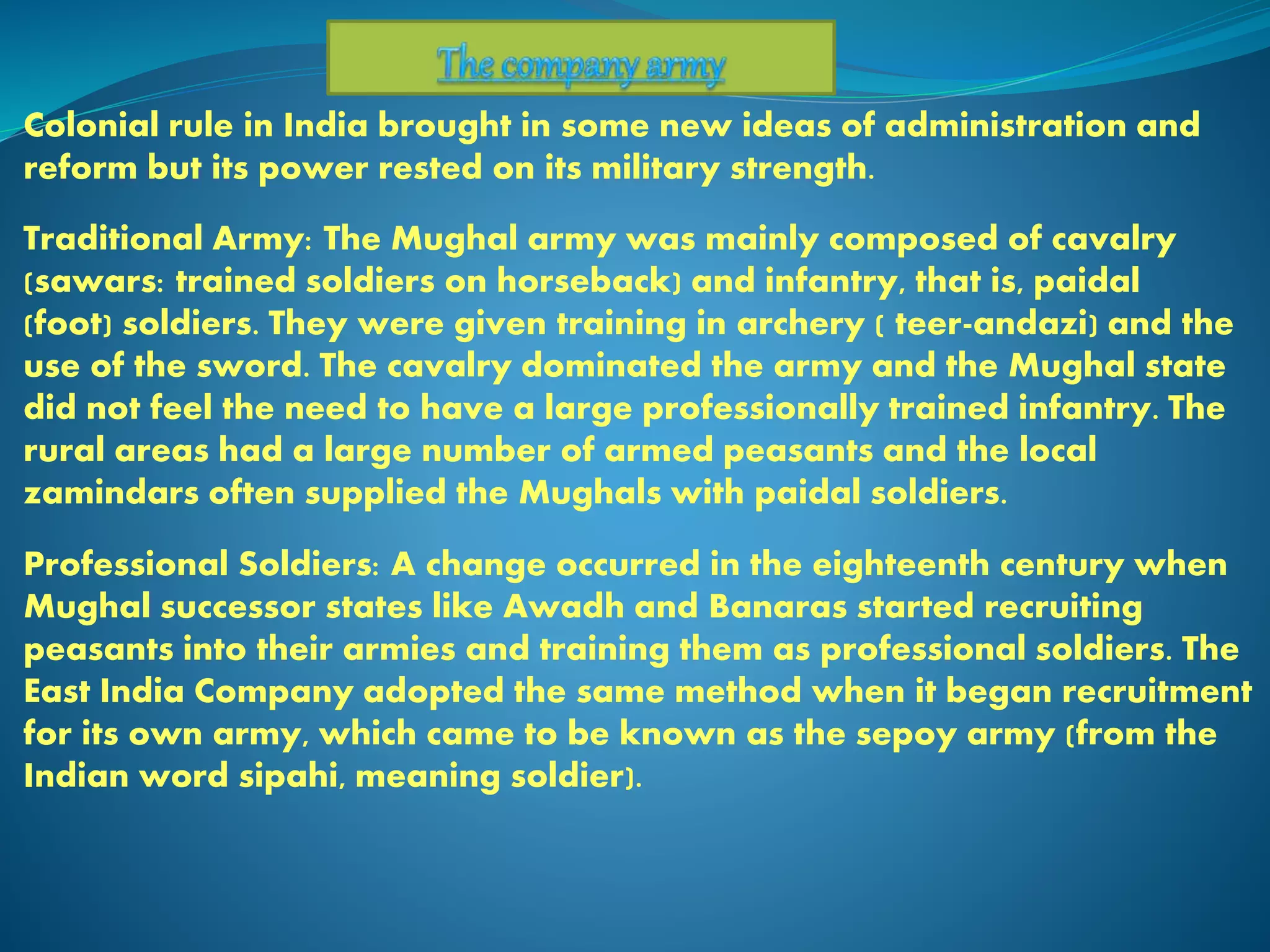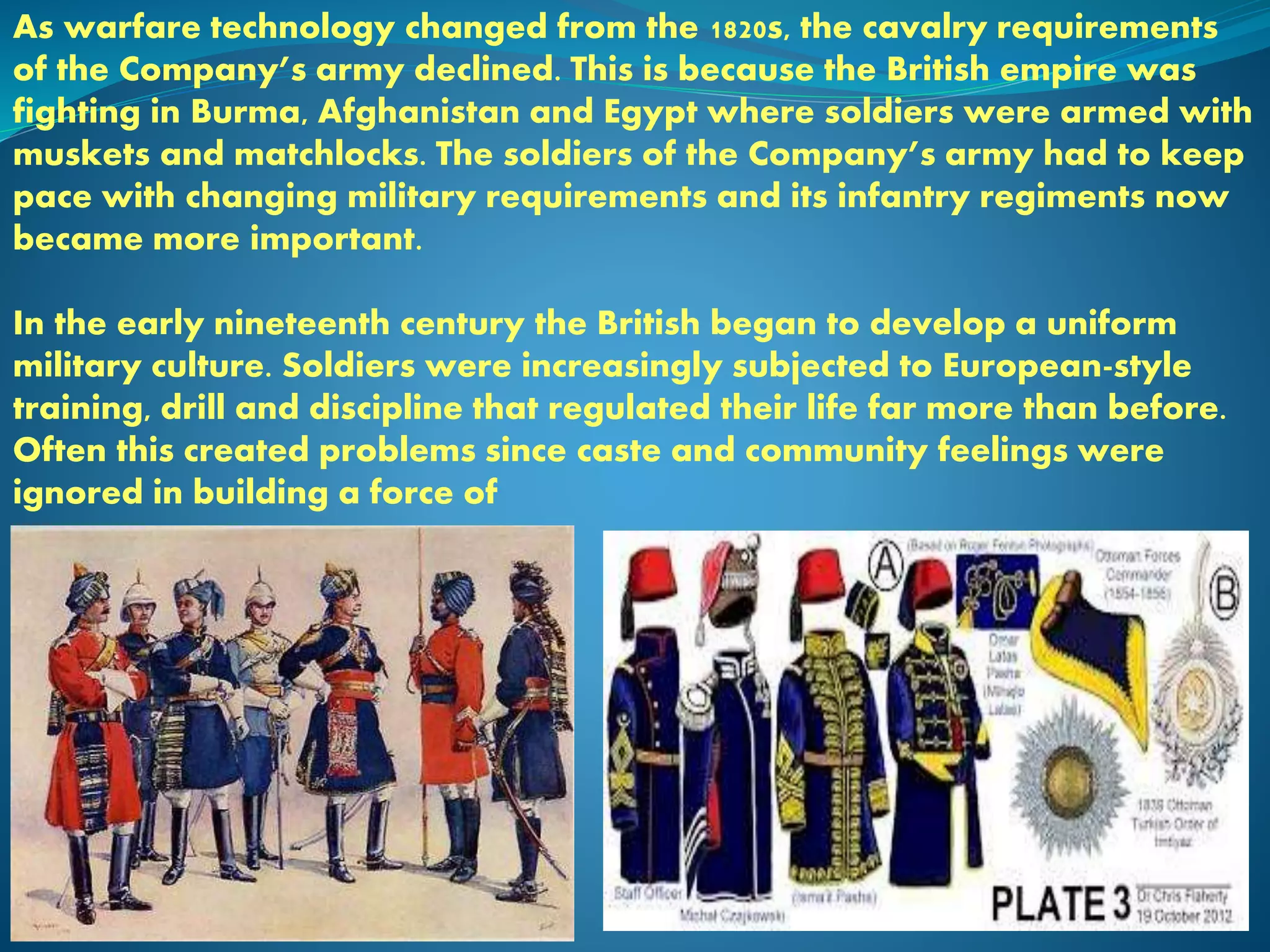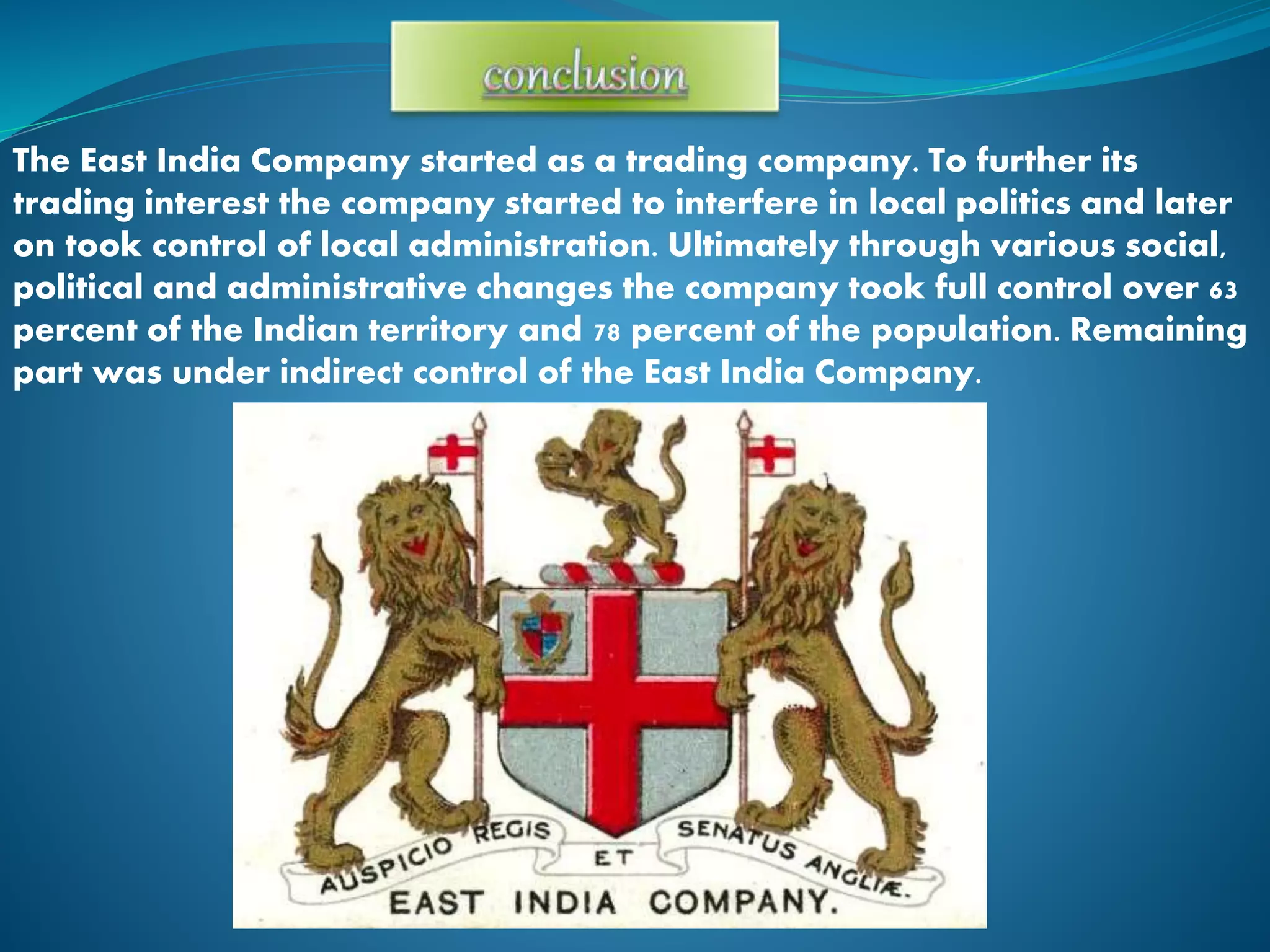The Battle of Plassey in 1757 marked the beginning of British rule in India. The Nawab of Bengal and his French allies were defeated by the British East India Company due to betrayal by the Nawab's army commander Mir Jafar. As a result, the entire province of Bengal came under British control, establishing their power in the subcontinent.
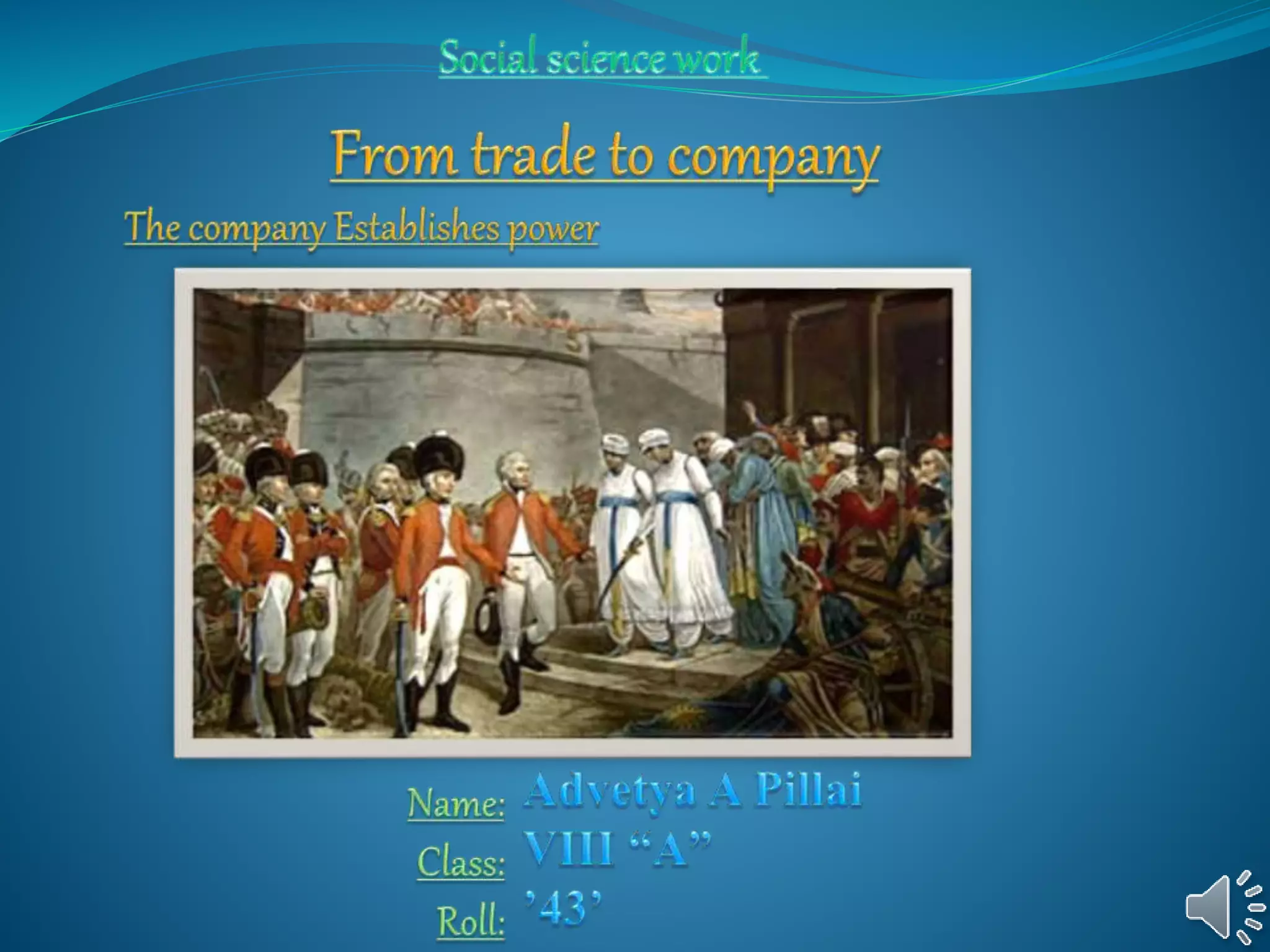
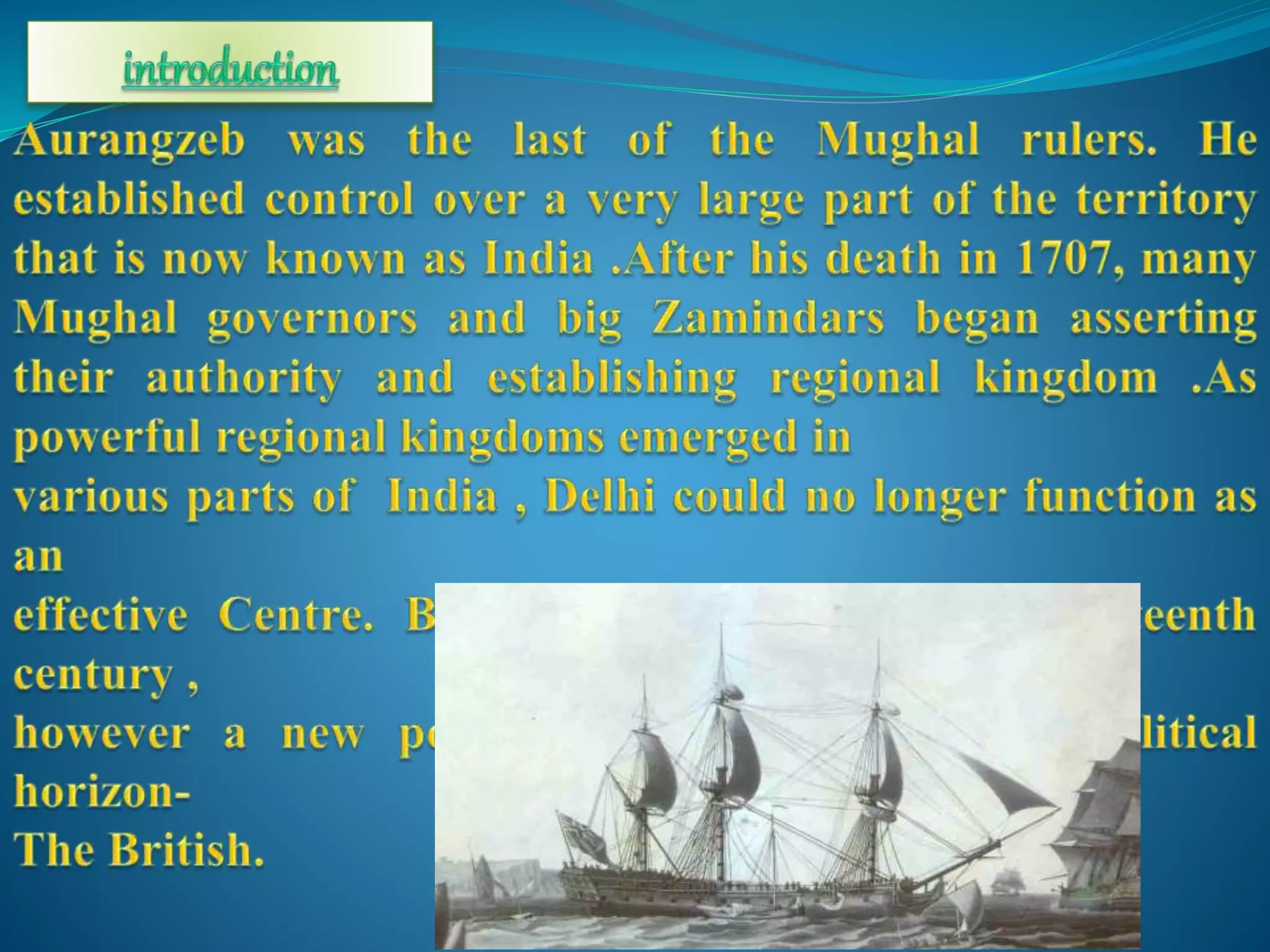
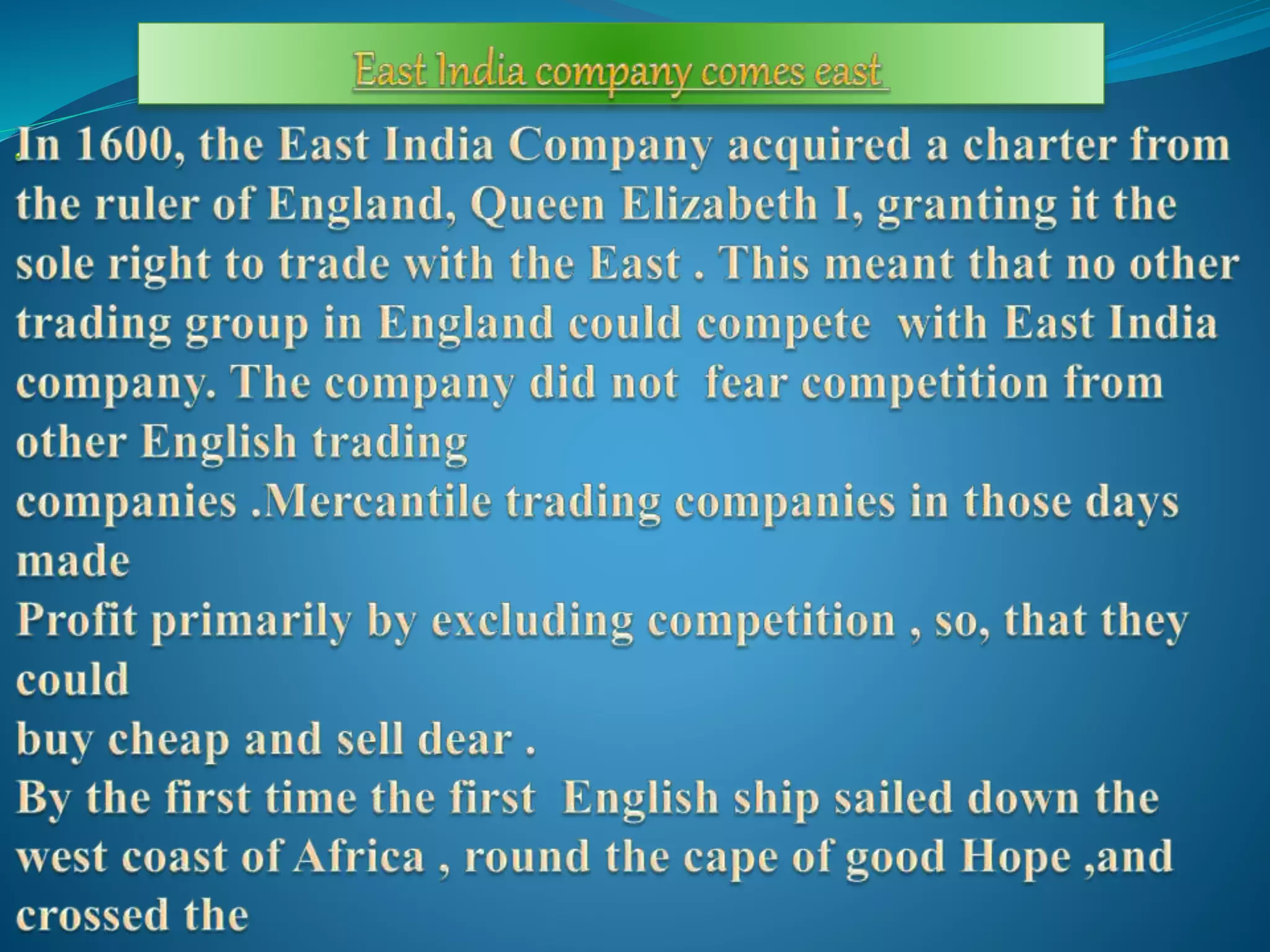

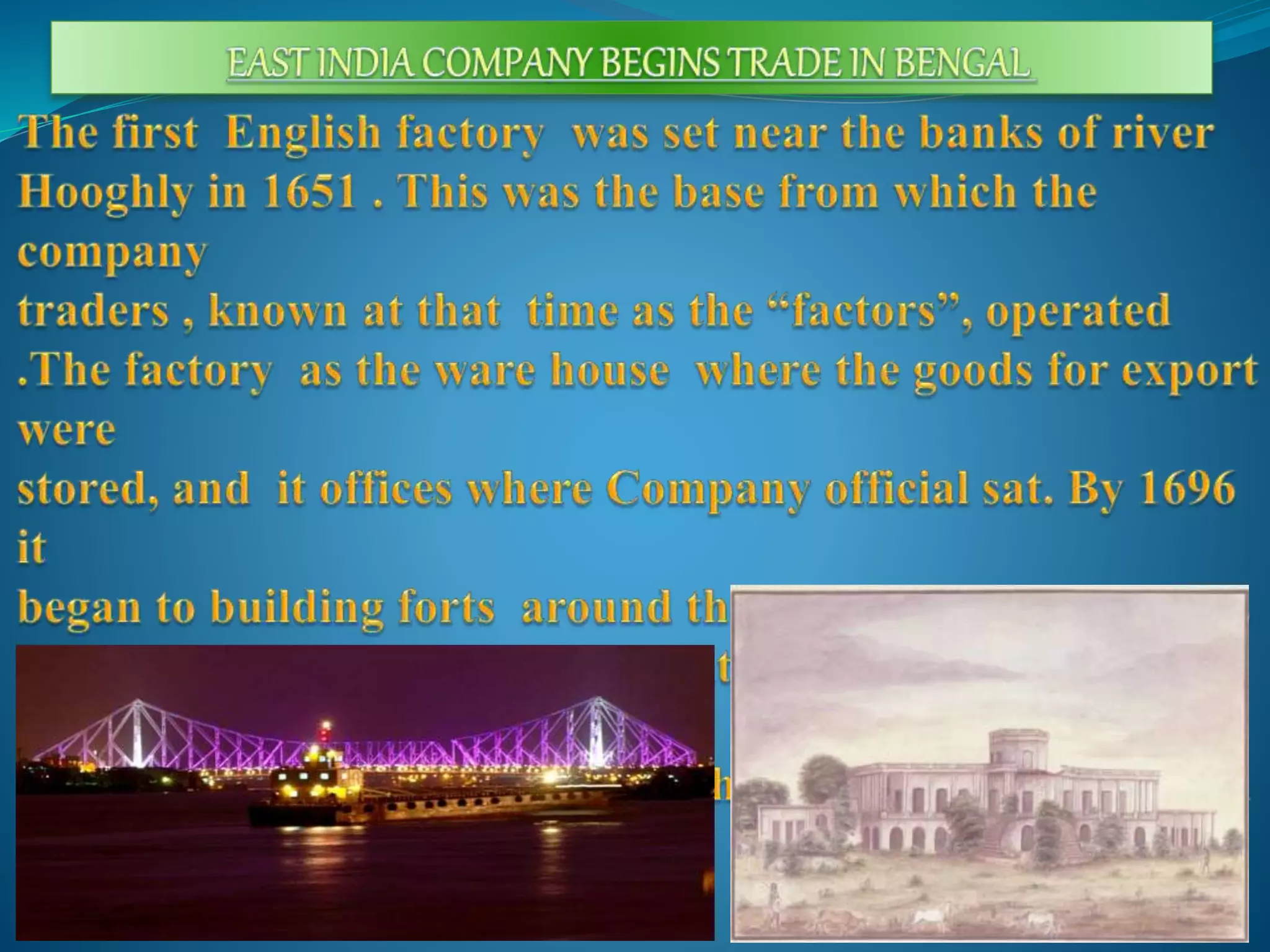

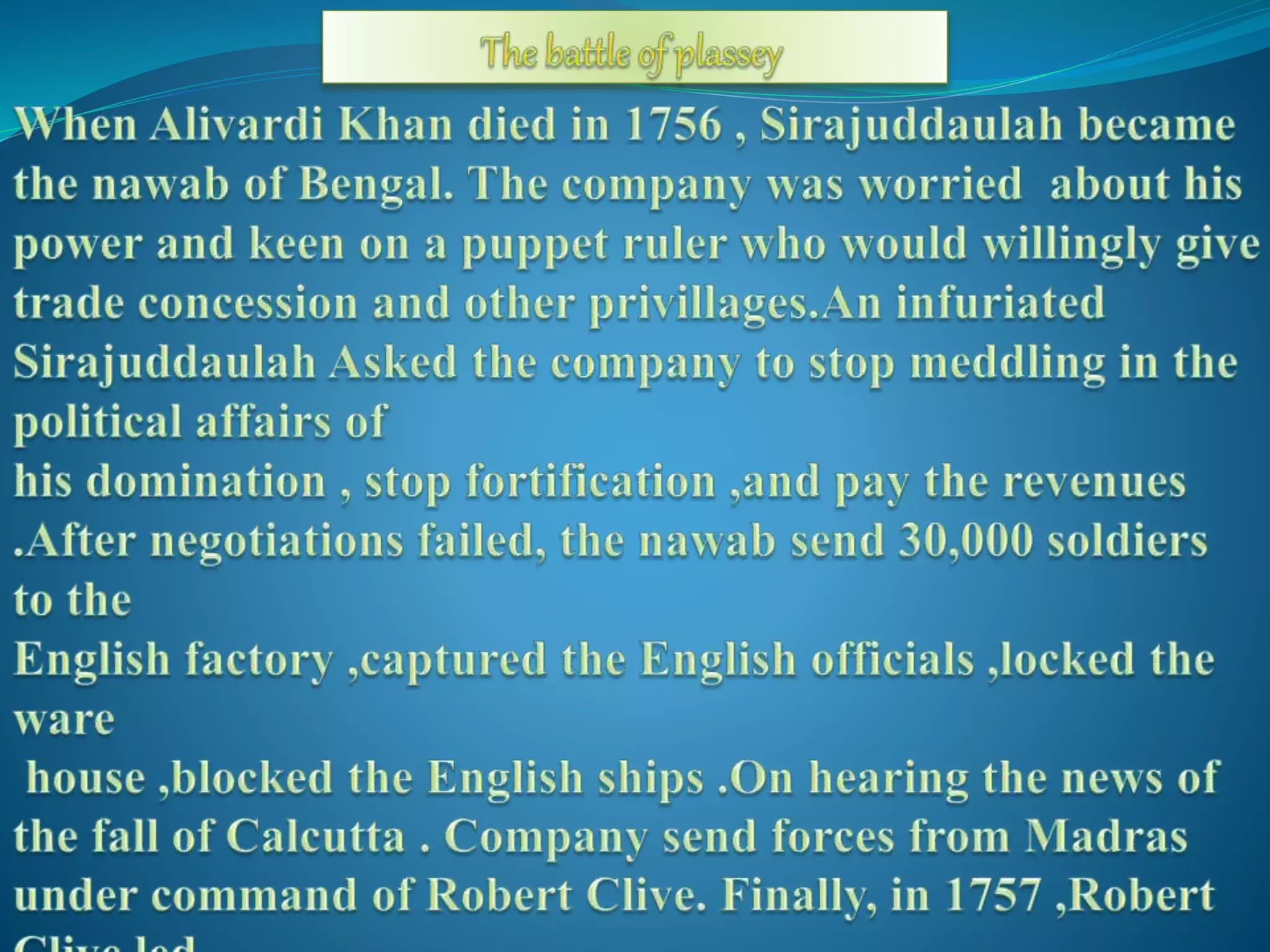
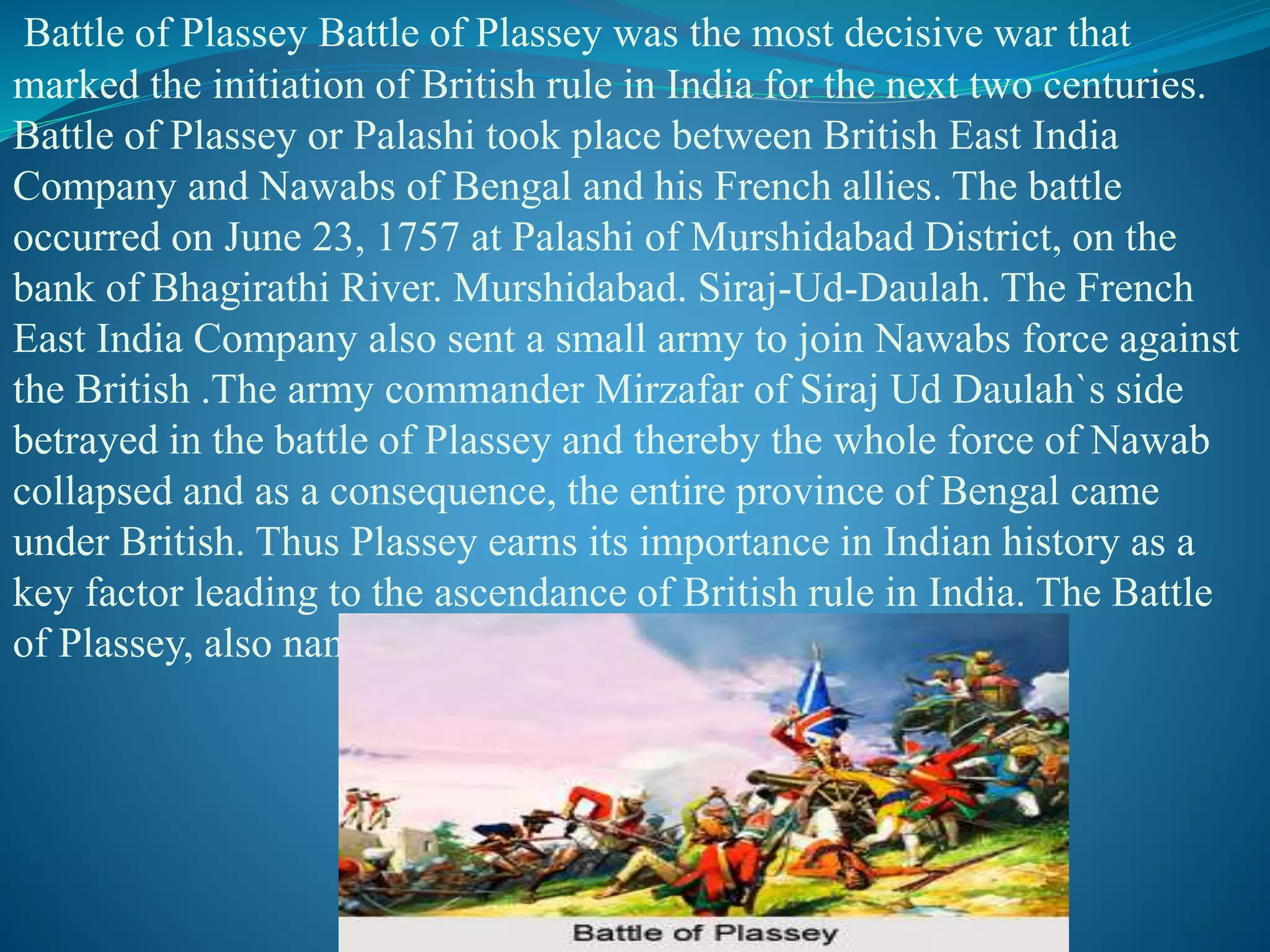

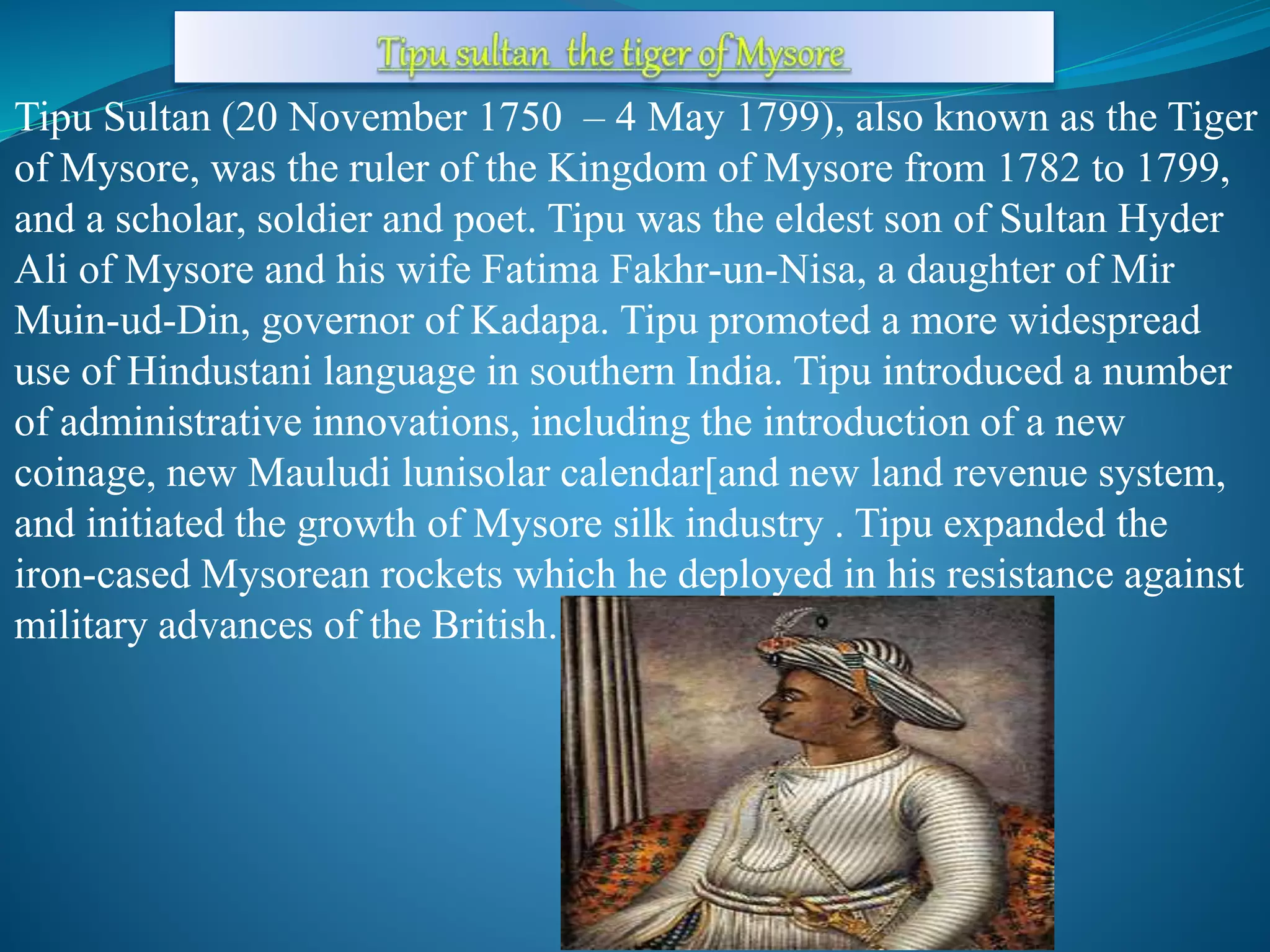
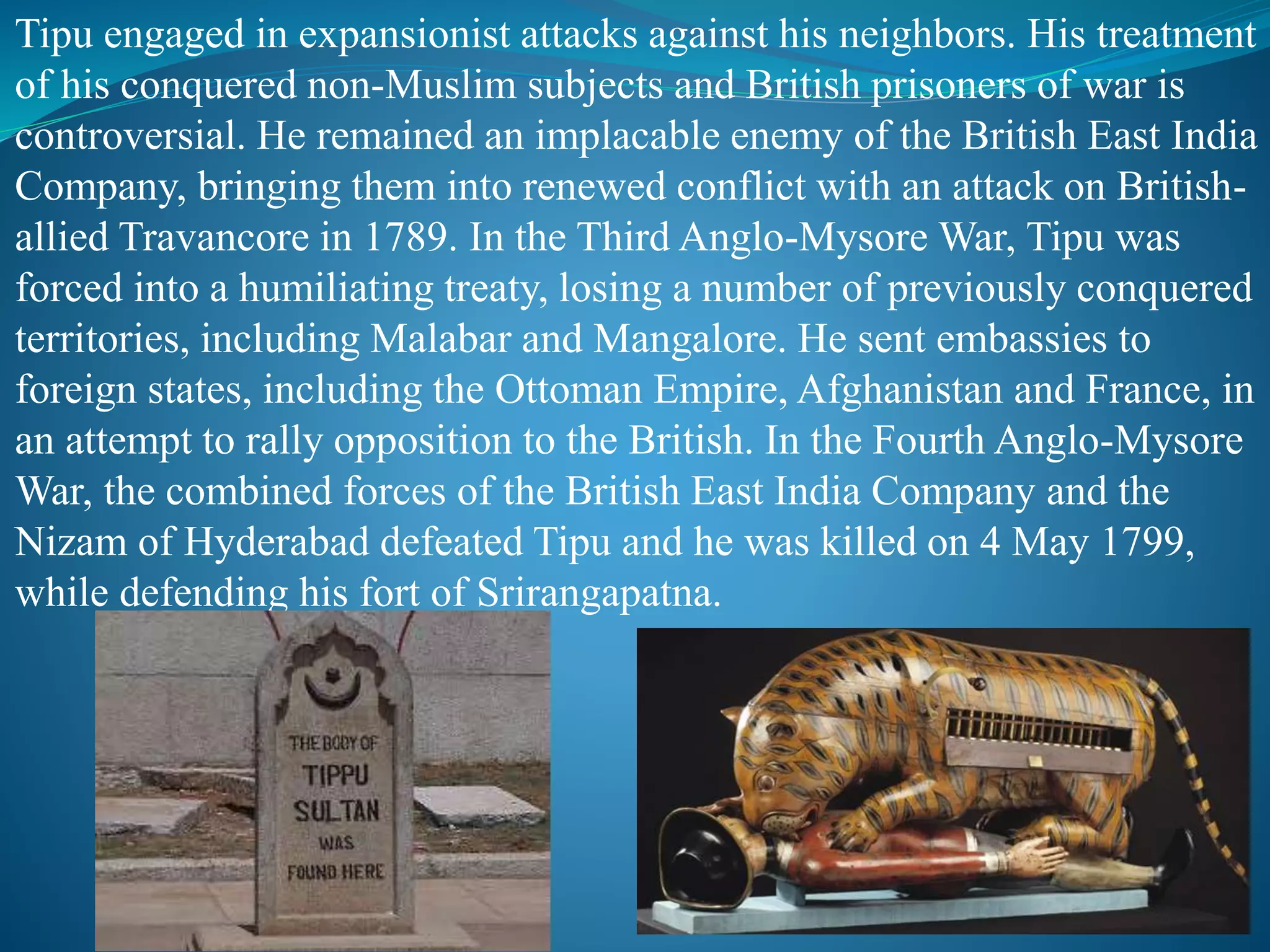
![The First Anglo-Maratha War (1775–1782) was the first of three Anglo-Maratha
wars fought between the British East India Company and Maratha Empire in
India. The war began with the Treaty of Surat and ended with the Treaty of
Saibai.
The Battle of Delhi took place on 11 September 1803 during the Second
Anglo-Maratha War, between British troops under General Lake, and
Marathas of Scindia's army under General Louis Bourquin. The battle was
fought at Patparganj, right across Yamuna River from Humayun's Tomb,
also giving the battle its local name.
The Third Anglo-Maratha War (1817–1818] was the final and decisive
conflict between the British East India Company and the Maratha Empire
in India. The war left the Company in control of most of India. It began
with an invasion of the Maratha territory by 110,400 British East India
Company troops,](https://image.slidesharecdn.com/fromtradetoterritorysst-140705092735-phpapp02/75/From-Trade-To-Territory-social-science-12-2048.jpg)
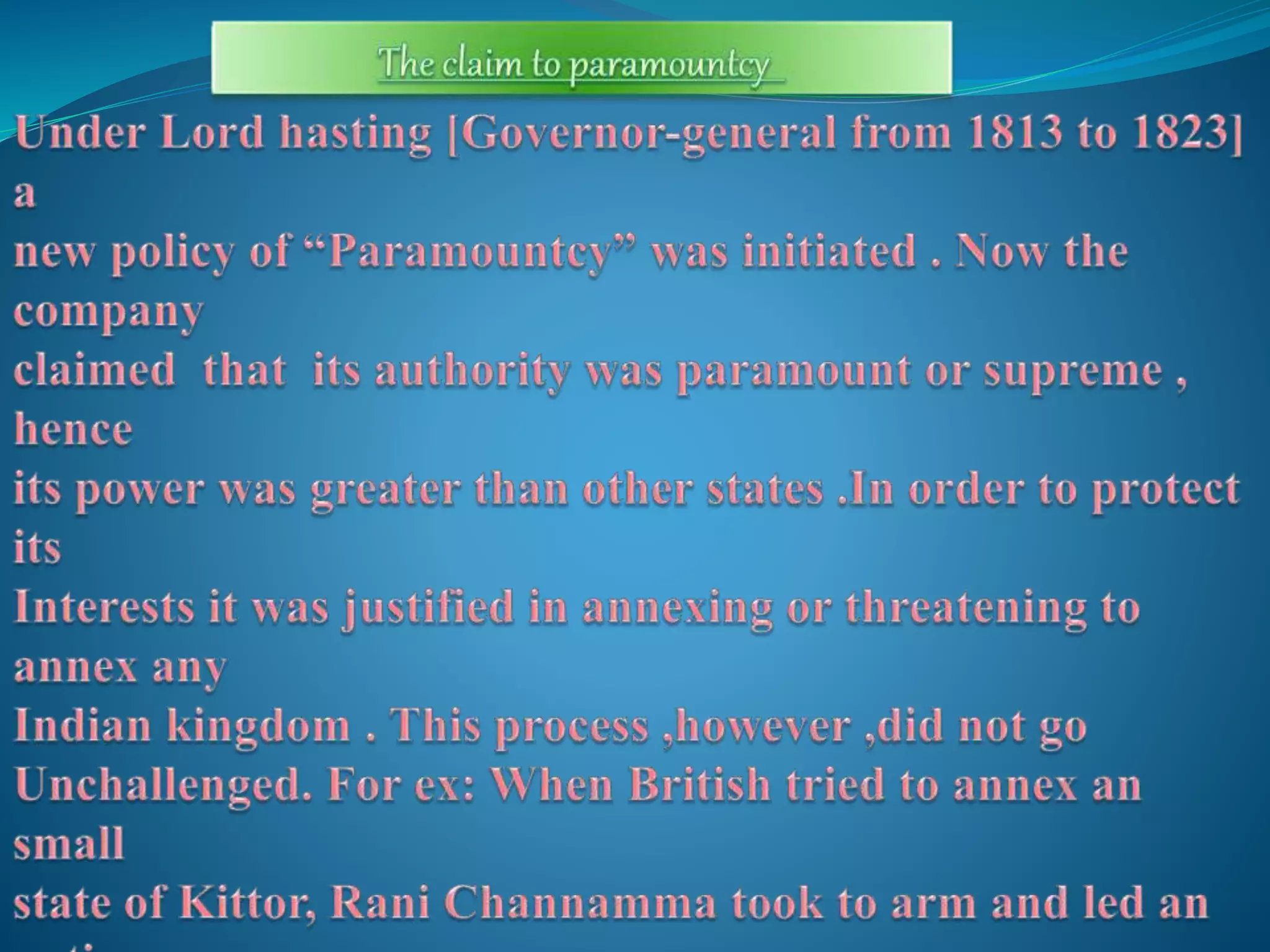
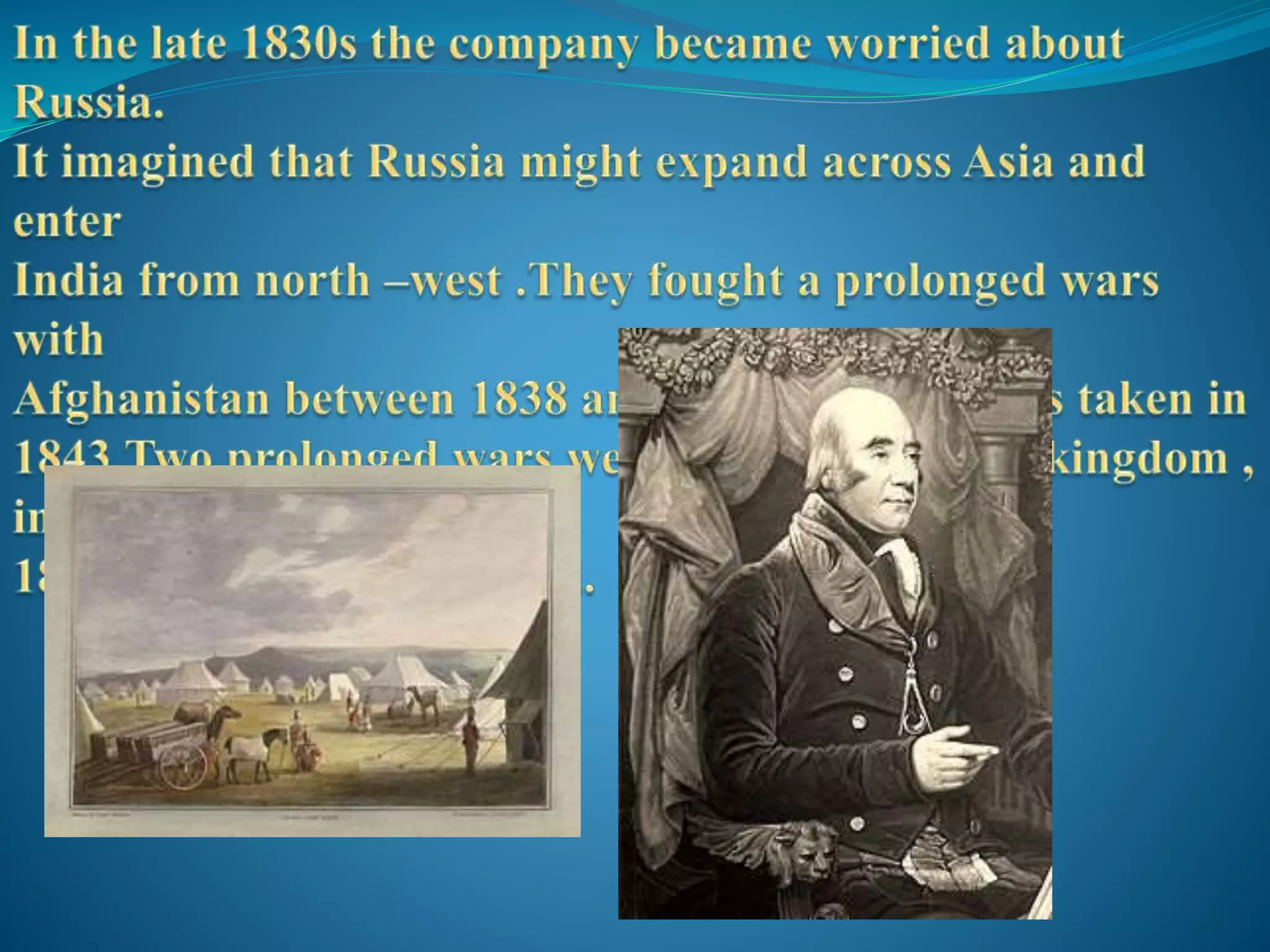
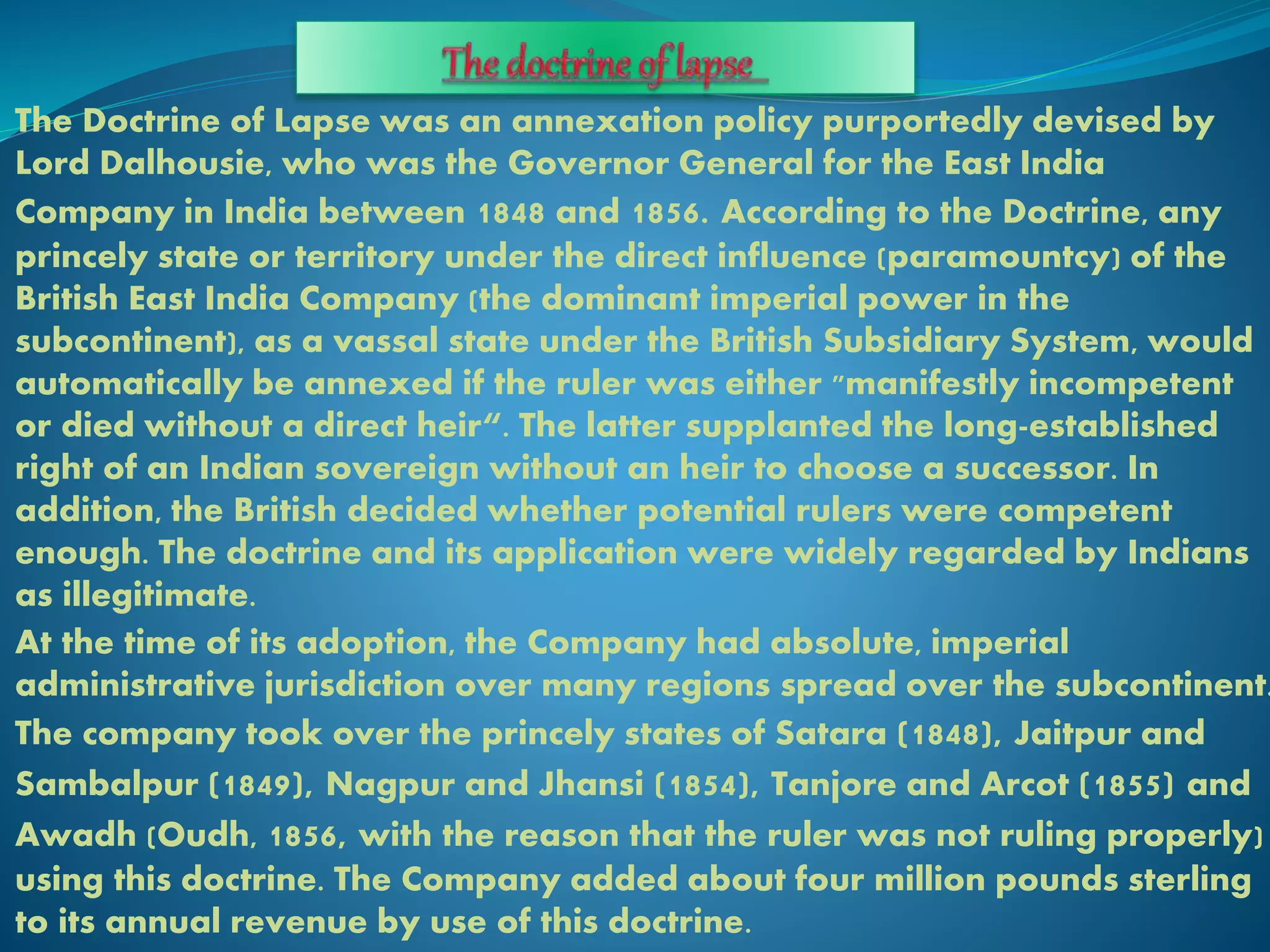

![The doctrine of subsidiary alliance was introduced by Marquess Wellesley,
British Governor-General in India from 1798 to 1805. Early in his
governorship Wellesley adopted a policy of non-intervention in the
princely states, but he later adopted the policy of forming subsidiary
alliances. This policy was to play a major role in British expansion in India.
The main principles of a subsidiary alliance were:
1]: An Indian ruler entering into a subsidiary alliance with the British
had to accept British forces within his territory and also agreed to pay for
their maintenance.
2]: The ruler would accept a British Resident in his state.
3]: An Indian ruler who entered into a subsidiary alliance would not
enter into any further alliance with any other power, nor would he
declare war against any power without the permission of the British.
4]:The ruler would not employ any Europeans other than the British, and
if he were already doing so, he would dismiss them.](https://image.slidesharecdn.com/fromtradetoterritorysst-140705092735-phpapp02/75/From-Trade-To-Territory-social-science-17-2048.jpg)
![5]:In case of a conflict with any other state, he would agree the resolution
decided upon by the British.
6]:The ruler would acknowledge the East India Company as the
paramount power in India.
7]:In return for the ruler accepting its conditions, the Company undertook
to protect the state from external dangers and internal disorders.
8]:If the Indian rulers failed to make the payments required by the
alliance, then part of their territory was to be taken away as a penalty.](https://image.slidesharecdn.com/fromtradetoterritorysst-140705092735-phpapp02/75/From-Trade-To-Territory-social-science-18-2048.jpg)
